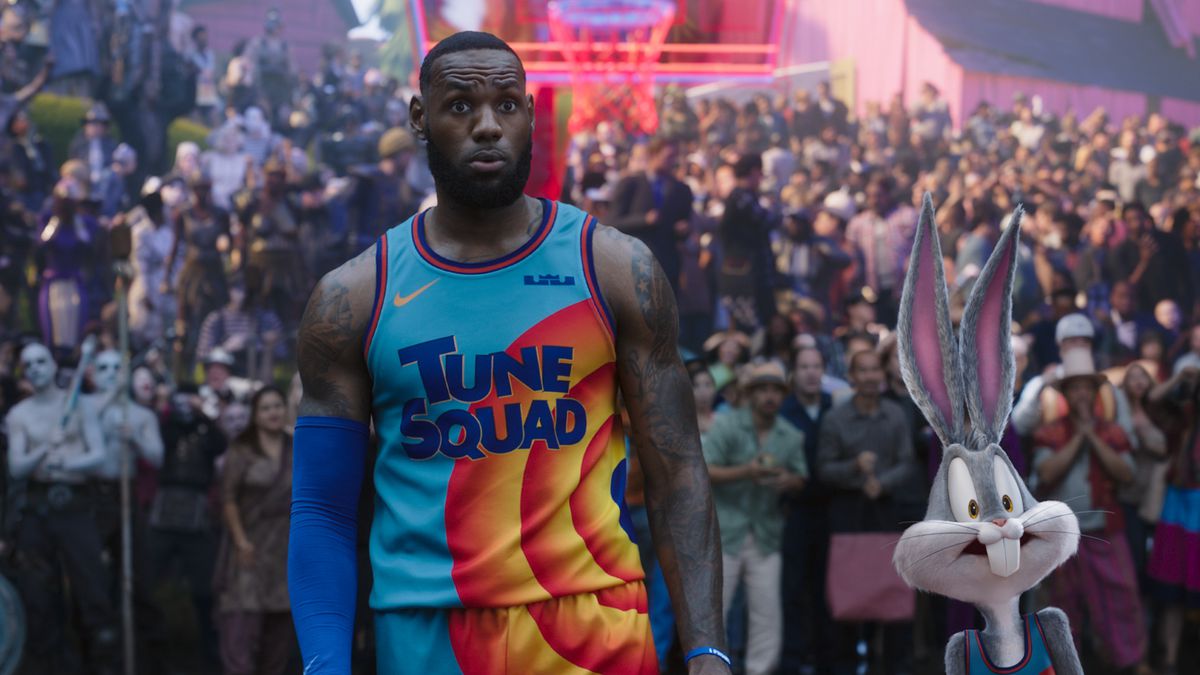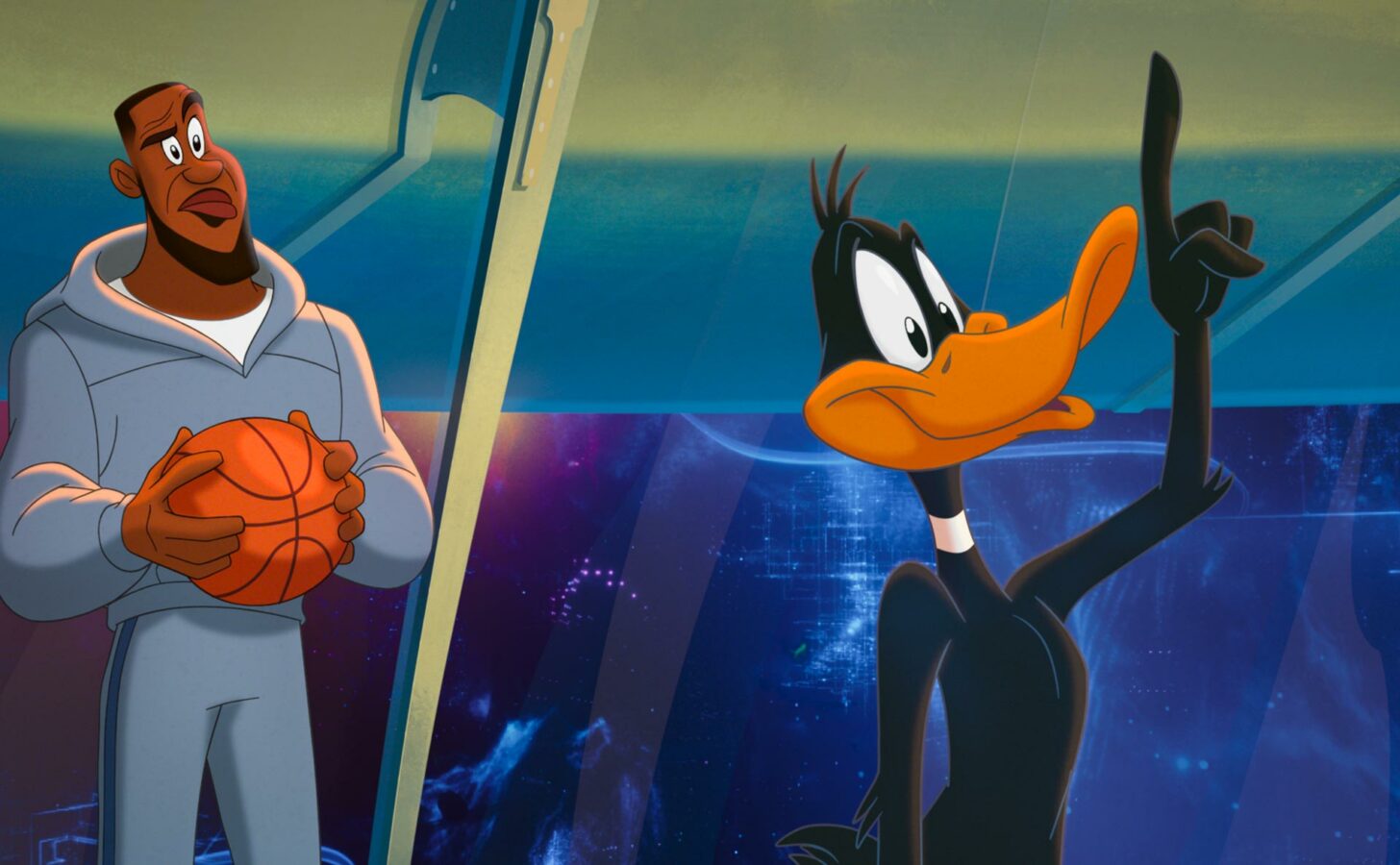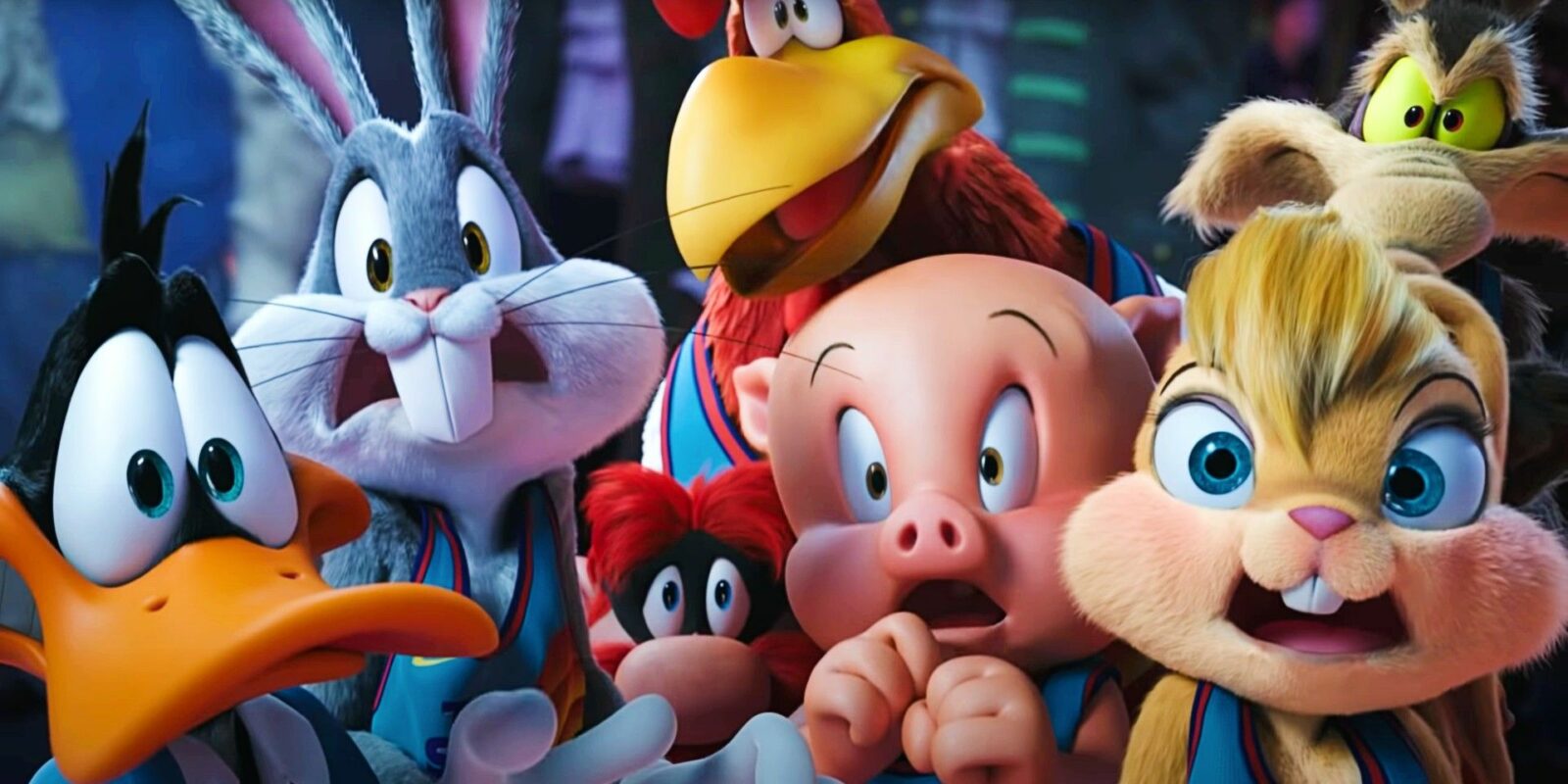Space Jam: A New Legacy is the long-awaited, Lebron-centered sequel many asked for, but many more never really wanted. So, what did we expect?
In philosophy, it’s believed that objectivity is, still, subjective, and one’s perception is warped around their own life experiences. In that sense, if you watch 1996’s Space Jam at the right time and the exact right age in your life, it’s a pinnacle of cinema. A masterwork of adolescent wish fulfillment. Even if basketball isn’t your game of choice, it’s hard not to get absorbed into the absurd wonderment of seeing the world’s biggest athlete and the greatest cartoon creatures in animation history joining forces in such an inexplicably goofy, high-spirited, rambunctiously silly extravagance.
As you get older (if you watched it with elder eyes), it’s easy to poke through the holes, to notice all the movie’s faults and glaring failures. It’s a flimsy, corporate movie, one that was meant to promote the Air Jordan brand and expand the market potential of Looney Tunes. It’s everything wrong with Hollywood yet everything you could ever want as a young kid watching a silly basketball movie with Bugs Bunny. It’s a film that defies easy explanation, and it’s also a film where its success—such as it is—can never, ever be completely recreated.
But when has that stopped Hollywood before?
The tantalizing promise of a Space Jam sequel has been a long-lived fantasy in the hearts of many millennials. It’s one of those rumored sequels that seems like a given but also sacrilegious. It’s the continuation that many moviegoers have simultaneously wanted and dreaded for over 20 years, and it’s finally here.
At long last, we have Space Jam: A New Legacy, a shiny, glossy, modernized, IP-driven sequel to the replay-friendly 1996 family film. Starring and produced by LeBron James, this late-in-the-game branding exercise is deliberately self-aware of its needless existence, yet it’s also knowingly glib in how much it wants to celebrate the heavy backlog of HBO Max’s extensive archive of classic and growing content.

It’s a movie that’s no less soulless than the original, but also a movie that feels some beholden need to take itself more seriously and pay some due reverence to a predecessor that lives in the fuzzy, nostalgic memory of an aging generation. It’s incredibly strange to see a new family film that’s aimed at very young children, ages 3-to-8, and stunted millennials like myself who must be content with reliving our waning youth for seemingly an eternity, never coming to terms with our diminishing cultural influence.
Like it or not, though, this is the movie we’ve been asking for. It’s time for pop culture jury duty.
Directed by Malcolm D. Lee, Space Jam: A New Legacy replaces a legacy-defining Michael Jordan with an admirably game LeBron James, particularly as the younger athlete attempts to forge a functional relationship with his on-screen son, Dom (Cedric Joe), who would rather shoot his shot as a game designer at E3 than net some hoops like his old man.
Advertisement
LeBron wants to be an attentive, open-minded father, though his son can’t compete with his dad’s looming image. When Warner Bros. attempts to rope James into a pitch meeting, where he’ll become the animated face of the company’s newest marketing division, the NBA superstar and his programmer son wind up interconnecting with Al-G Rhythm (Don Cheadle), a humanized algorithm who attempts to use this fractured relationship to his computer advantage by making LeBron fight for his son back.
In the process, James is sent to the world of the Looney Tunes, which is now populated solely by Bugs Bunny (Jeff Bergman), a misanthrope by design who must contend with his own echoing loneliness in a world that has moved on from his simple, antic-loving worldview.
Outside of the expected, convoluted goofiness of the plotting, it’s easy to see what could (and should) have been a pointed meta-narrative about the inherent emptiness of pursuing pencil-pushing ambitions rather than one’s own personal and creative desires. Perhaps that’s the angle that proved to be appealing to Terence Nance, an inventive filmmaker who was initially onboard to direct (he’s given several writing credits here).
The less confined version of this movie would’ve explored the sterile reality of our current blockbuster era, where seemingly anything is possible yet nearly nothing is tangible.
There are still seeds found in that idea here, but they’re often pushed to the side in favor of promoting the sweet, sweet, sweet lucrative potential of seeing all your favorite film characters together—on one, simple streaming service! Though it wasn’t in the original plan, it does feel fitting that this movie will premiere in theaters and on HBO Max simultaneously. It’s a commercial for their century-old archive, found readily on one platform. And it’s available to you, too—jump into the server and experience the magic.
Advertisement

And yet, for all its inherent bottom-feeding cynicism, there’s an emotional core here that’s hard to ignore. The emotionality of the original Space Jam is an afterthought. There’s an effort on MJ’s part to create his own revisionist history, to provide a cinematic ode that paints the public perception of his darkest chapter in a bright, zippy light. There’s also a side story about Michael trying to foster a relationship with his parents and kids that’s largely ignored.
In New Legacy, to its credit, the father-son dynamic takes the center, providing a tender earnestness that often offsets the naked brand-building at the root of this heavily commercialized sequel. I assume that’s Ryan Coogler’s influence. Much like with Creed, Space Jam: A New Legacy is about celebrating the past while also championing the next generation, forging the gap between the old and new age. Granted, it’s much less successful, but it gives the movie something undeniably textured, something that roots this algorithm-driven mess (quite literally) into something oddly touching.
The sentimentality is grating amidst all the calculated decision-making, but it’s also not unfelt.
Which brings us to LeBron James. As evidenced by Trainwreck, the athlete is a more easeful and confident actor than your average basketball star. With the exception of Shaq or Dennis Rodman, it’s hard to think of too many athletes who are so confident in themselves as actors and so willing to make themselves the punchline at the same time.
Advertisement
While LeBron is perhaps too image conscious to really sell this movie wholeheartedly, he’s committed to the bit. He brings his all to each scene, which might be jarring compared to Michael Jordan’s stoic coolness. He’s an active, engaged performer, if not a complete natural. The weirdest complaint I can make about New Legacy is that LeBron is maybe trying too hard, here. His performance is effortful and sweaty in a way that sometimes makes you long for the dedicated coolness of Jordan’s commanding screen presence.
Is it a better performance? Maybe. But there’s also something to be said about how Jordan’s clunky downplaying made the animation pop more. Comparatively, LeBron is trying his damndest to match the energy of a cartoon rabbit. Like everything in this movie, it comes across forceful, like he wants to prove to himself as much as the audience that this can work—nay, should and will work! LeBron wants to make it happen, and there’s no faulting his burning enthusiasm for the project, for better or worse.
That brings us to the Looney Tunes. Emotionally speaking, there’s something undeniably affecting about seeing the 2D animated characters on the big screen again. It’s been nearly 20 years since they’ve had a platform to shine, and the animators play it up as well as they can.

Is there a place for Looney Tunes in our day and age?
That’s not for me to say, but it is appealing to see such colorful characters at a time when such animated efforts are fading away from the cultural consciousness. Will this be a long residence? Likely not, which the movie seems to acknowledge wistfully. There’s an inherently dark irony to Warner Bros. being sheepish to make a movie based on the cartoon character that once appeared in their very logo. Times change.
Generally speaking, Space Jam: A New Legacy is caught between being tolerably mediocre and tediously mediocre. For every inspired gag, including an A-list cameo, there are one or two groans to be endured. For every tiresome pop culture reference, however, there’s an inspired background gag or a silly callback that earns a begrudging smile.
For whatever it’s worth, New Legacy will be the only 2021 movie to feature The Mask, Austin Powers, Jabberjaw, a nun from Ken Russell’s The Devils, Superman, and Foghorn Leghorn. Sometimes in the same frame. Like it or not, that makes this a movie for our current era.
Ultimately, Space Jam: A New Legacy would never be what I hoped it would be, because I’m a grown man and not the 10-year-old kid who rewatched the original Space Jam VHS over and over and over again. And yet, this sequel doesn’t frustrate me the way it has clearly unsettled much more jaded critics than myself.
Is it good? No, but it’s not a bad time either. Much like the original, I’ve certainly seen crasser, shallower, and far less amusing commercials in my life. Does that excuse its frenetic, frenzied, flop-sweat failures? No, but that doesn’t make it much worse than other corporate cash grabs. At least it’s not dull. That said, when it comes to the soundtracks, there’s still no comparison.
Space Jam: A New Legacy comes to theaters and HBO Max (for 30 days) starting July 16. Watch the full trailer here.
Advertisement







